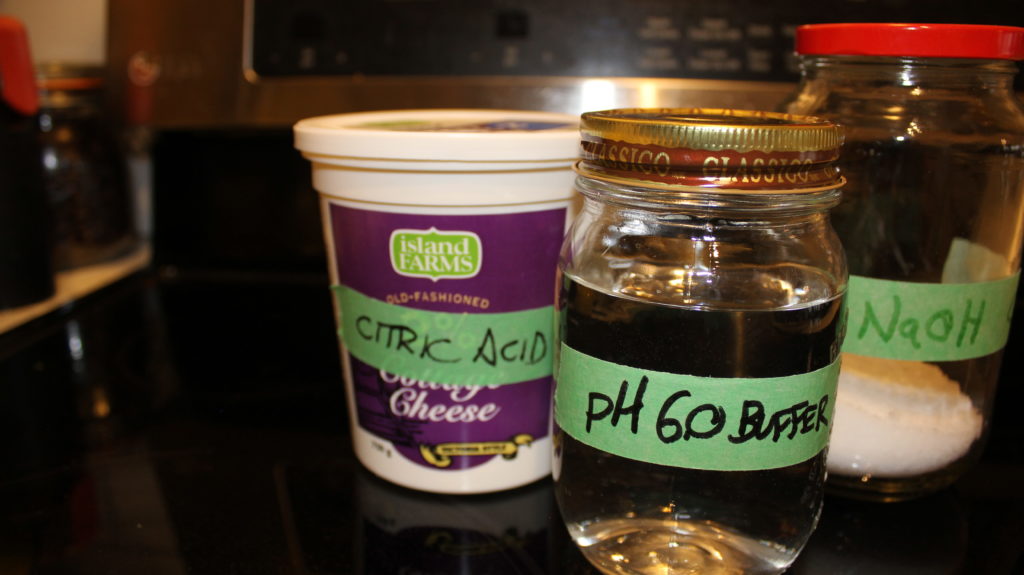Why use a pH buffer?
This is my first stab at making a pH buffer for sugar washes. The thing about sugar washes is that they don’t have any natural pH buffer built in. As fermentation kicks off, pH drops, slowing the rate of fermentation. If the pH gets low enough all fermentation activity will stop and we’ll get a stuck fermentation. Controlling pH is a key factor in sustaining high fermentation rate.
A pH buffer, like to ones I used to use in chemistry 101, should be a viable way to control pH throughout the fermentation process. The pH buffers in our blood keep us alive, so why not try a pH buffer for sugar wash fermentation?
What makes up a pH buffer?
After doing some research I settled on citric acid for my pH buffer. I chose citric acid mostly because I bought a bunch of it years ago and it has been sitting around collecting dust. It is a weak acid and has a boiling temp of 310 C, so it should stay in the boiler during distillation. It’s food safe, safe to handle, and available everywhere.
To form a pH buffer you need a weak acid and its conjugate base. This is usually achieved by combining a weak acid with a strong base. We already know that citric acid is our weak acid, so we need to pick our strong base. Sodium hydroxide (also known as lye and caustic soda) is what I decided on.
I found sodium hydroxide at a local soap making store for about $1 per 100 grams. Be careful with this stuff, it will burn you, turn your skin into soap. The store recorded the details of my drivers’ license before selling it to me. Do your research and ensure you are taking every precaution. This is a dangerous material, so handle it accordingly, and wear protective gear.
When we have citric acid and sodium hydroxide in water we get the below reaction.
The hydrogen ions combine with the hydroxide ions to form 3 molecules of water and heat. We are left with the sodium ions and citrate ions in solution. We now have sodium citrate in solution.
The sodium citrate must be balanced with citric acid to get the desired pH for the buffer solution. You can think of the pH of the buffer solution as a ratio between the weak acid and its conjugate base. The total amounts of acid and conjugate base in a solution determine the capacity of the buffer solution to resist changes in pH. The more acid and conjugate base added, the less the pH will change throughout fermentation. Here is a video explaining pH buffers using legos if you are interested.
Recipe
In our first iteration of the pH buffer, I ended up using 44.1 grams of citric acid and 25 grams of sodium hydroxide. This resulted in a buffer with a pH of 6. Please keep in mind that the reaction taking place is exothermic, meaning it gives off heat. When mixing citric acid and sodium hydroxide together the solution in the jar probably reached 50 C, so I would recommend using a container that won’t crack, like tempered glass laboratory equipment.
Conclusion
This 6.0 pH buffer solution is intended to be used with a 6 gallon, 1.070 specific gravity, sugar wash. It will be used in a future project where we collect experimental data on how the pH buffer, oyster shells, baking soda, and no pH control, affect fermentation rates. Experimental results on the pH buffer in sugar wash can be found on my pH experimental data blog post.

